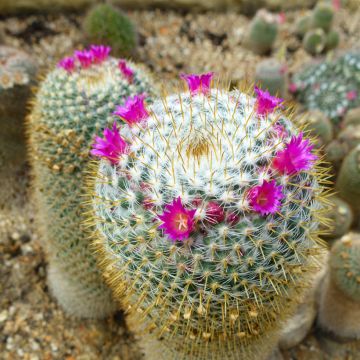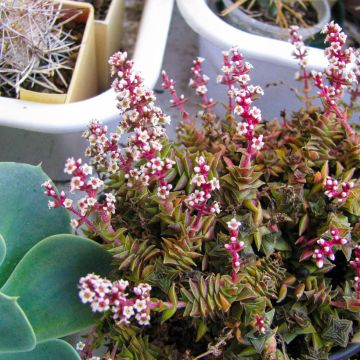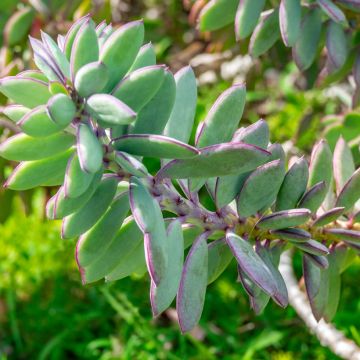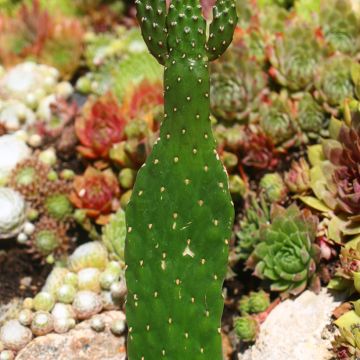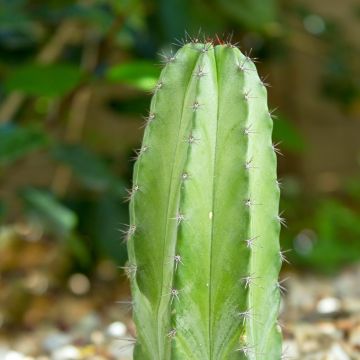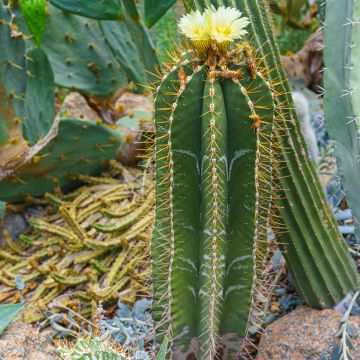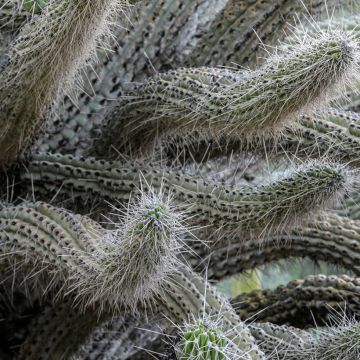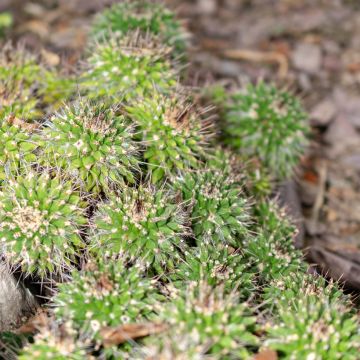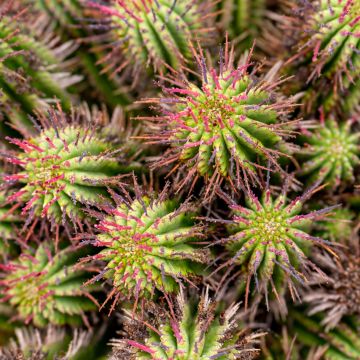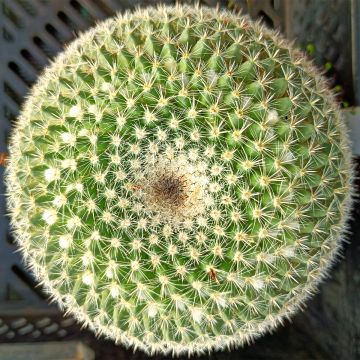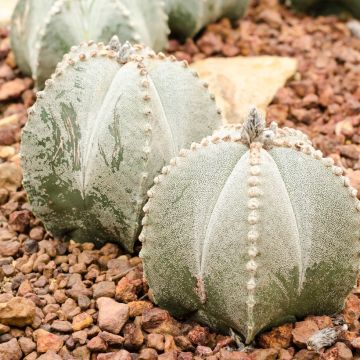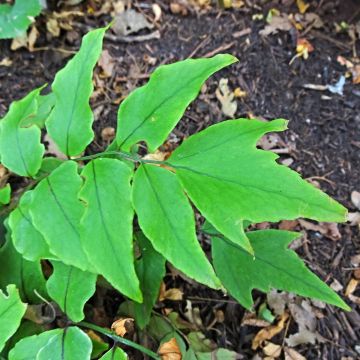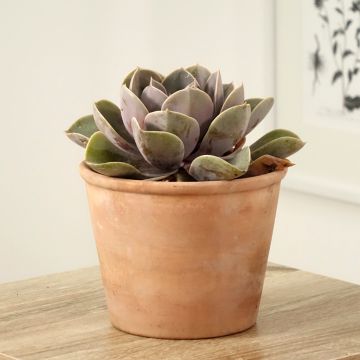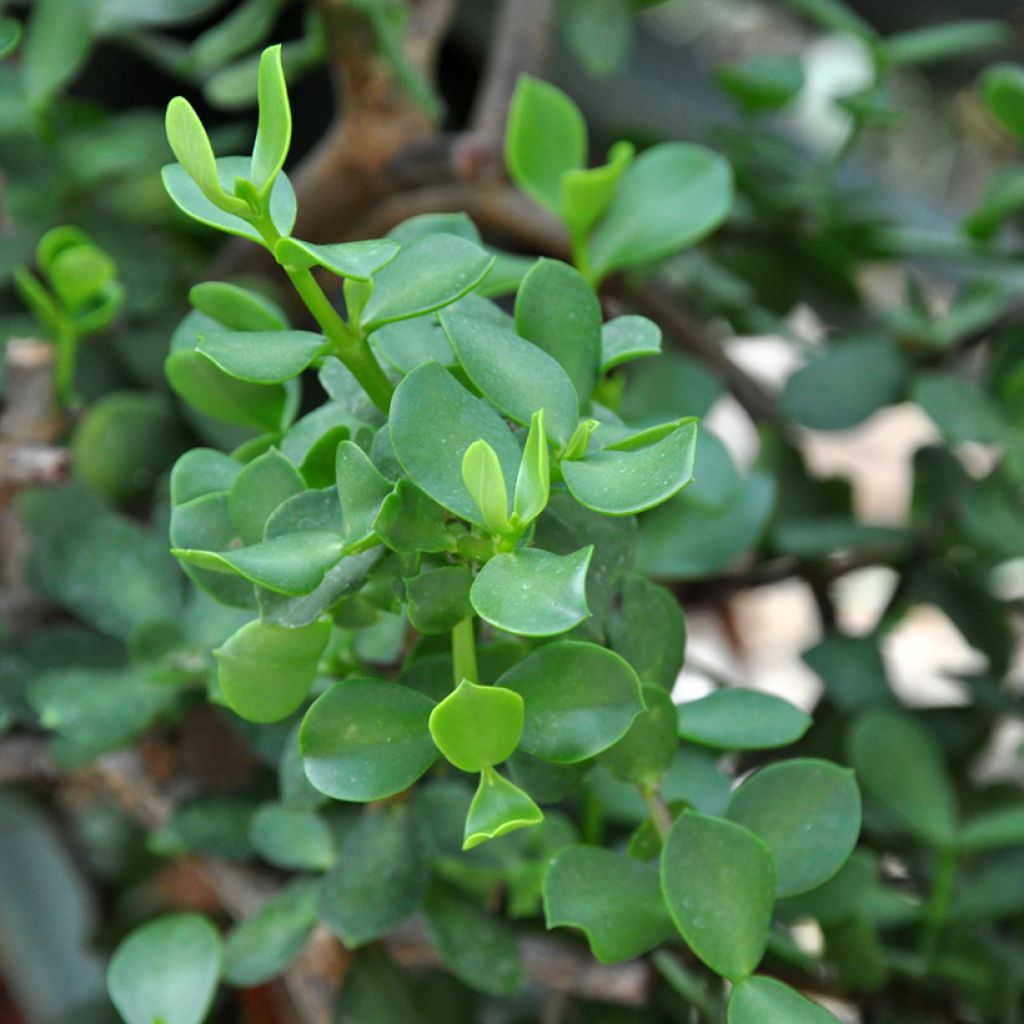

Portulacaria afra Macrophylla - Elephant bush
Portulacaria afra Macrophylla - Elephant bush
Portulacaria afra Macrophylla
Elephant bush, porkbush, rainbow bush, spekboom tree, purslane
This item cannot be shipped to the selected country
Delivery charge from 6,90 €
More information
Shipping country:
-
-
-
-
-
-
-
-
-
-
-
-
-
-
-
-
-
-
-
-
-
-
-
-
-
-
-
-
-
-
-
-
Schedule delivery date,
and select date in basket
This plant carries a 30 days recovery warranty
More information
We guarantee the quality of our plants for a full growing cycle, and will replace at our expense any plant that fails to recover under normal climatic and planting conditions.
From 7,90 € for pickup delivery and 6,90 € for home delivery
Express home delivery from 8,90 €.
Description
Portulacaria afra 'Macrophylla', also known as the elephant bush, is a succulent shrub native to South Africa. Valued for its fleshy, rounded foliage, in a soft green hue, and its thick reddish stems, this cultivar is distinguished by its larger leaves compared to the typical species. It is often compared to Crassula ovata (jade plant) but grows faster and is more drought-tolerant. Ideal for pots or bonsai, it is very hardy and adapts perfectly to bright indoor cultivation.
Portulacaria afra 'Macrophylla' belongs to the Didiereaceae family. The species is native to the arid regions of South Africa, where it grows wild as a dense bush or a small tree, reaching several metres in height. This species has the botanical synonyms Crassula portulacaria, Haenkea crassifolia, Portulacaria portulacaria, Claytonia portulacaria.
Indoors, when grown in a pot, Portulacaria afra 'Macrophylla' reaches 80 cm to 1 m in height, depending on the pot size and pruning frequency. Its fleshy, oval leaves measure 2 to 3 cm in diameter and display a bright green colour that contrasts with its reddish stems. With a naturally branching habit, it is an excellent plant for bonsai training. If conditions are right, this elephant bush may produce small, pale pink star-shaped flowers in summer. However, flowering is rare indoors.
Portulacaria afra 'Macrophylla' thrives in a very bright position, preferably in full sun or near a well-exposed window. It tolerates temperatures ranging from 10 to 30 °C, but must be protected from cold below 5 °C. Its growing medium must be very well-draining, with a mix of cactus compost, coarse sand, and perlite being ideal to avoid excess moisture. Water moderately, allowing the soil to dry out completely between waterings. In winter, the plant enters dormancy and will only require occasional watering.
Portulacaria afra 'Macrophylla' can be placed in a bright living room, conservatory, or well-lit office. Planted in a terracotta pot, it benefits from good drainage, and the terracotta colour will highlight its lush green foliage. It pairs well with other succulent shrubs, such as Crassula ovata 'Minor' or Euphorbia tirucalli, as well as with other succulents like Aloe or Senecio barbertonicus. For a bonsai effect, it can be grown in a shallow pot and pruned regularly to densify its foliage.
Report an error about the product description
Foliage
Plant habit
Botanical data
Portulacaria
afra
Macrophylla
Didiereaceae
Elephant bush, porkbush, rainbow bush, spekboom tree, purslane
South Africa
Other Indoor cacti and succulents
View all →Location
Location
Maintenance and care
Potting advice, substrates and fertilisers
Houseplant care
Disease and pest advice
Maintenance and care
This item has not been reviewed yet - be the first to leave a review about it.
Similar products
Haven't found what you were looking for?
Hardiness is the lowest winter temperature a plant can endure without suffering serious damage or even dying. However, hardiness is affected by location (a sheltered area, such as a patio), protection (winter cover) and soil type (hardiness is improved by well-drained soil).

Photo Sharing Terms & Conditions
In order to encourage gardeners to interact and share their experiences, Promesse de fleurs offers various media enabling content to be uploaded onto its Site - in particular via the ‘Photo sharing’ module.
The User agrees to refrain from:
- Posting any content that is illegal, prejudicial, insulting, racist, inciteful to hatred, revisionist, contrary to public decency, that infringes on privacy or on the privacy rights of third parties, in particular the publicity rights of persons and goods, intellectual property rights, or the right to privacy.
- Submitting content on behalf of a third party;
- Impersonate the identity of a third party and/or publish any personal information about a third party;
In general, the User undertakes to refrain from any unethical behaviour.
All Content (in particular text, comments, files, images, photos, videos, creative works, etc.), which may be subject to property or intellectual property rights, image or other private rights, shall remain the property of the User, subject to the limited rights granted by the terms of the licence granted by Promesse de fleurs as stated below. Users are at liberty to publish or not to publish such Content on the Site, notably via the ‘Photo Sharing’ facility, and accept that this Content shall be made public and freely accessible, notably on the Internet.
Users further acknowledge, undertake to have ,and guarantee that they hold all necessary rights and permissions to publish such material on the Site, in particular with regard to the legislation in force pertaining to any privacy, property, intellectual property, image, or contractual rights, or rights of any other nature. By publishing such Content on the Site, Users acknowledge accepting full liability as publishers of the Content within the meaning of the law, and grant Promesse de fleurs, free of charge, an inclusive, worldwide licence for the said Content for the entire duration of its publication, including all reproduction, representation, up/downloading, displaying, performing, transmission, and storage rights.
Users also grant permission for their name to be linked to the Content and accept that this link may not always be made available.
By engaging in posting material, Users consent to their Content becoming automatically accessible on the Internet, in particular on other sites and/or blogs and/or web pages of the Promesse de fleurs site, including in particular social pages and the Promesse de fleurs catalogue.
Users may secure the removal of entrusted content free of charge by issuing a simple request via our contact form.
The flowering period indicated on our website applies to countries and regions located in USDA zone 8 (France, the United Kingdom, Ireland, the Netherlands, etc.)
It will vary according to where you live:
- In zones 9 to 10 (Italy, Spain, Greece, etc.), flowering will occur about 2 to 4 weeks earlier.
- In zones 6 to 7 (Germany, Poland, Slovenia, and lower mountainous regions), flowering will be delayed by 2 to 3 weeks.
- In zone 5 (Central Europe, Scandinavia), blooming will be delayed by 3 to 5 weeks.
In temperate climates, pruning of spring-flowering shrubs (forsythia, spireas, etc.) should be done just after flowering.
Pruning of summer-flowering shrubs (Indian Lilac, Perovskia, etc.) can be done in winter or spring.
In cold regions as well as with frost-sensitive plants, avoid pruning too early when severe frosts may still occur.
The planting period indicated on our website applies to countries and regions located in USDA zone 8 (France, United Kingdom, Ireland, Netherlands).
It will vary according to where you live:
- In Mediterranean zones (Marseille, Madrid, Milan, etc.), autumn and winter are the best planting periods.
- In continental zones (Strasbourg, Munich, Vienna, etc.), delay planting by 2 to 3 weeks in spring and bring it forward by 2 to 4 weeks in autumn.
- In mountainous regions (the Alps, Pyrenees, Carpathians, etc.), it is best to plant in late spring (May-June) or late summer (August-September).
The harvesting period indicated on our website applies to countries and regions in USDA zone 8 (France, England, Ireland, the Netherlands).
In colder areas (Scandinavia, Poland, Austria...) fruit and vegetable harvests are likely to be delayed by 3-4 weeks.
In warmer areas (Italy, Spain, Greece, etc.), harvesting will probably take place earlier, depending on weather conditions.
The sowing periods indicated on our website apply to countries and regions within USDA Zone 8 (France, UK, Ireland, Netherlands).
In colder areas (Scandinavia, Poland, Austria...), delay any outdoor sowing by 3-4 weeks, or sow under glass.
In warmer climes (Italy, Spain, Greece, etc.), bring outdoor sowing forward by a few weeks.

































